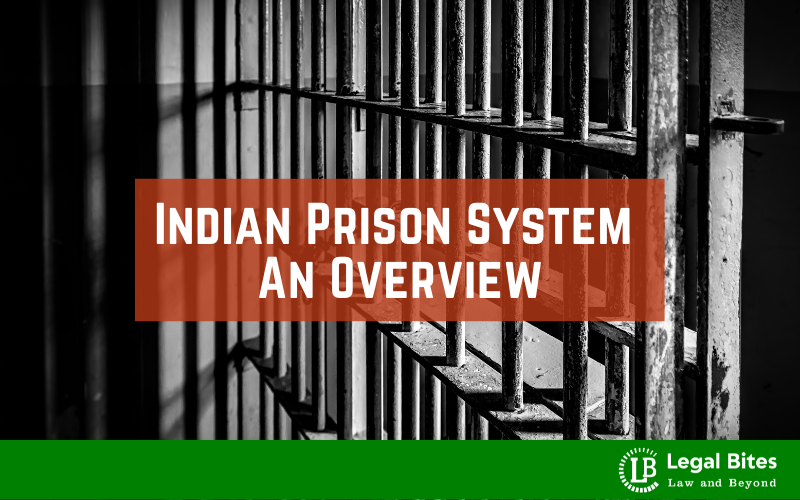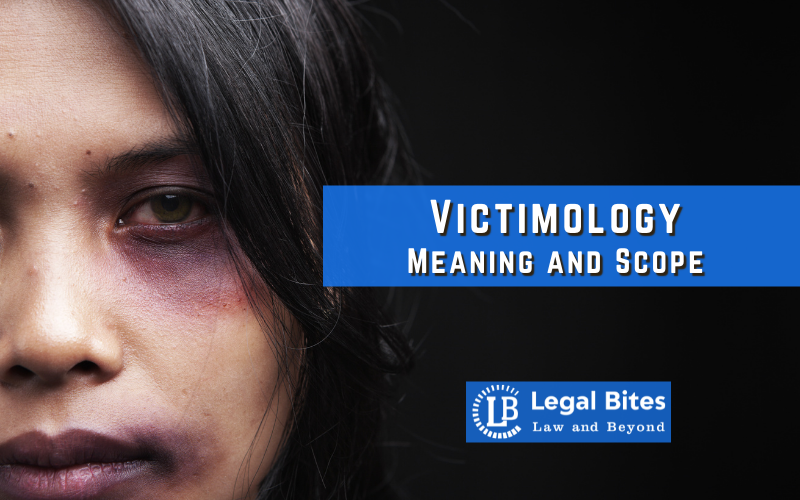Indian Prison System: An Overview
Read this article on ‘Indian Prison System’ to understand the background, development, challenges and reforms required. Introduction The prison system is a useful and significant component of criminal justice systems just as the Police and the Judiciary. Prisons have been since time immemorial have played a significant role in the establishment of rule of law and facilitating the… Read More »
;
Read this article on ‘Indian Prison System’ to understand the background, development, challenges and reforms required. Introduction The prison system is a useful and significant component of criminal justice systems just as the Police and the Judiciary. Prisons have been since time immemorial have played a significant role in the establishment of rule of law and facilitating the maintenance of peace and order in the society. The physical and practical shape of prisons as well...
Read this article on ‘Indian Prison System’ to understand the background, development, challenges and reforms required.
Introduction
The prison system is a useful and significant component of criminal justice systems just as the Police and the Judiciary. Prisons have been since time immemorial have played a significant role in the establishment of rule of law and facilitating the maintenance of peace and order in the society. The physical and practical shape of prisons as well as their objectives and expectations from them have kept changing owing to the evolution, development and changes in society.
The main objective of the Prison system is to ensure and secure the detention of prisoners and help in their rehabilitation and finally their integration into the mainstream of the society and also to ensure that they do not turn towards crime after their release, by providing them with the necessary humane education and vocational training in order to also minimise the sense of guilt.
Prisons and their administration is a state subject covered by item 4 under the State List in the Seventh Schedule of the Constitution of India. Therefore, the management and administration of prisons fall exclusively in the domain of the State Governments and is governed by the Prison Act of 1894 and the Prison manuals of the respective State Governments.
Problems with the Indian Prison System
Time and again the conditions of the Indian Prisons have been an important topic of debate and discussion and several reforms have been propagated in improving the condition of the Indian Prisons. In Sunil Batra v. Delhi Administration[1] in relation to the rights of the prisoners, the court held that prisoners are not animals and where a prisoner is traumatized, our constitution suffers. Despite many rulings in this regard the problems of the dilapidated condition of the prisons are still persists.
There have been reports of harassment and torture in jails, there is a neglect of health and hygiene, labour being extracted from them without paying proper wages, overcrowding in prisons leading to congestion, continuously increasing number of undertrial prisoners, inadequate prison staff, lack of proper care and treatment of prisoners, insubstantial food and inadequate clothing and lack of uniformity in the law relating to the prisons across various states.[2]
Reforms in Prison System
In India, the foundations of the contemporary prison administration were laid by the Britishers during British rule. Post-independence, there was much talk about inculcating the reformative measures in the existent prison system providing an opportunity for rehabilitation, provisions for health, recreation and education.
The Report of Royal Commission, 1949-53 mentions that “imprisonment itself is the penalty and it is not the function of the prison authorities to add further penalties day by day by the punitive condition of discipline labour and diet.”
Jail Reforms Committee, 1983 recommended for:
- The setting up of a National Prison Commission to oversee the modernisation of the prisons in India.
- Putting a ban on clubbing together juvenile offenders with the hardened criminals in prisons.
- Enacting comprehensive and protective legislation for the security and protective care of delinquent juveniles.
- Segregation of mentally ill prisoners to a mental asylum.
- Classification of prisoners should be done on some scientific and rational basis.
Important Case
The Supreme Court of India in its various judgements on different aspects of Prison Administration has laid down various principles regarding imprisonment and custody. Rama Murthy v. State of Karnataka[3] was a landmark judgement that originated because of a letter sent by a prisoner in Central Jail which was treated as a writ petition wherein the problems in the current Indian Prison System were dealt with.
The Supreme Court in this case took note of the dilapidated conditions of the prisons in India and observed that the prison system is afflicted by nine major problems i.e – overcrowding, delay in the trial, torture and ill-treatment, neglect of health and hygiene, insubstantial food and inadequate clothing, prison vices, deficiency in communication, streamlining of jail visits and management of open-air prisons. The Court further issued detailed directions on the same:
- To take appropriate decision on the recommendation of the Law Commission of India’s 78th Report on the subject of ‘Congestion of undertrial prisoners in jail’.
- To consider appropriate suggestions of Mulla Committee and accordingly streamline the system of parole.
- To deliberate on enacting of new Prison Act replacing the current i.e Old Indian Prison Act 1894.
- To examine the question of framing the All India Jail Manual.
- To provide the prisoners with proper medical facilities and appropriate hygienic conditions.
- To think about the need of having a complaint box in all the jails.
- To think about the introduction of the liberalisation of communication facilities.
- To take needful steps for streamlining of jail visits.
- To ruminate on the question of the introduction of open-air prisons at least in the District Headquarters of the country.
Unnatural Custodial Deaths in Prisons
Custodial Violence has always been a matter of great concern for all civilized societies as it could take the form of third-degree methods to extract information and cruel forms of psychological torture. Custodial violence ranges from extreme psychological tortures to violation of bodily integrity through sexual violence. Such cases of custodial violence demand a greater degree of sensitivity among those in authority.[4]
In Re-Inhuman Conditions Prisons 1382,[5] Chief Justice R.C. Lahoti highlighted one aspect of custodial deaths, namely, unnatural deaths in prisons amongst the four prominent issues highlighted namely, i.e –
- Overcrowding in prisons
- Unnatural deaths of prisoners
- Gross inadequacy of staff
- Available staff being untrained or inadequately trained
National Crime Records Bureau (NCRB) indicates that deaths in judicial custody are both natural and unnatural and as per the International Committee of Red Cross (ICRC), a large number of unnatural deaths are attributable to suicides.
In a report published by the National Human Rights Commission (NHRC) in 2014 titled ‘Suicide in Prison- prevention strategy and implication from human rights and legal points of view’ it was shown that, during the period of 2007-2011, deaths in prisons on account of suicide formed 71% of the total number of unnatural deaths. This study conducted by the NHRC reflected that there are mainly two causes for all jail suicides i.e the environment in the jail and the crisis faced by an inmate.
With regards to compensations provided to the kinds of unnatural custodial death victims in Re-Inhuman Conditions Prisons 1382[6] that, unless the State realises that custodial death is itself a crime and monetary compensation is not necessarily the only appropriate relief that can be granted to the next of kin of the deceased, such unnatural deaths will be continued to be unabated. But that does not mean that the kins of such victims of custodial deaths should be deprived of the compensation as a person who has been a perpetrator of crime could nevertheless be a victim of unnatural death.
The directives issued by the Court were namely:
- There should be a counsellor and support persons in prisons in order to advise prisoners in crisis.
- State Governments should in conjunction with the State Legal Service Authority and the National and State Police Academy and the Bureau of Police Research and Development conduct training and sensitisation programmes for senior police officials of all prisons on their functions, duties and responsibilities.
- Visits to prison by the family of a prisoner should be encouraged and the possibility of using phones and video conferencing of the prisoner with the family member should also be explored.
- State Legal Service Authorities must conduct surveys to access the overall conditions of prisons in the State and the facilities available and every High Court in the capacity of ‘patron-in-chief’ of the SLSA must take up this initiative.
- Prisoners should be provided with medical assistance and facilities as the right to health is a human right and all State Governments must work to make this a reality for all, including prisoners.
- The constitution of the Board of Visitors which includes non-official visitors is of considerable importance as it facilitates in initiating reforms in prisons and rehabilitating them.
- It is worth considering ‘open jails’ by the State Governments.
- The Ministry of Women and Child Development of the Government of India which is concerned with the implementation of the Juvenile Justice (Care and Protection of Children) Act, 2015 was directed to discuss with the concerned officers of the State Governments and formulate procedures for tabulating the number of children who suffer unnatural death in child care institutions where they are kept in custody.
Concept of Open Prisons
An open prison can be understood to mean any penal establishment in which the prisoners serve their sentence with minimal supervision and perimeter security, and are not locked up in prison cells. The concept is based on principles of self-discipline and “trust begets trust” which, if managed properly, can reform the human resource.[7] The Model Prison Manual (BPR and D 2003) classifies open prison institutions in India into three types:
- Semi-Open Training Institutions
- Open Training Institutions/ Open Work Camps
- Open Colonies
The open prison campus in Anantapur, Andhra Pradesh is one such prison where depending on the good conduct and completion of two-thirds of their sentence closed prisoners are moved to open prisons. It is based on the trust that they will not be chained and nor will they escape.
Another open prison in Rajasthan called Shri Smpurnanand Khula Bandi Shivir is such a place manned by just two guards where the prisoners build their own houses, are permitted to go out and work in between designated hours and their children can attend schools. But, to be selected for this open prison the inmates have to serve at least a third of their sentences including remission in an ordinary jail before being eligible for transfer and criminals of heinous offences are not selected.
Open prisons, therefore, do facilitate in improving the mental health of the inmates and establish a relationship of trust and facilitates rehabilitation in a real sense. This is why the Courts have time and again places emphasis on the idea of open prisons.
In Ramamurthy v. State of Karnataka (1997), the Supreme Court had explicitly observed that open prisons represent one of the most successful applications of the principle of individualisation of penalties with a view to social readjustment.
Rights of Prisoners
The Courts in India in recent years have interpreted the rights of prisoners liberally, giving a deeper and innovative meaning to the concept of ‘procedure’ and ‘liberty’ in Article 21 of the Constitution of India. In Sunil Batra (II) v. Delhi Administration[8] the Supreme Court emphasised the role of courts in the enforcement of human rights within the prison walls to see that prisoners were not treated in an arbitrary manner.
All India Committee on Jail Reforms, 1980-83 has suggested that there are certain rights available to the prisoners such as:
- The right to Human Dignity: The right to the integrity of the body, immunity from use of repression and personal abuse, whether by custodial staff or by fellow prisoners.
- The right to non-deprivation of fundamental rights guaranteed by the Constitution of India, except in accordance with law prescribing conditions of confinement.
- The right to Basic Minimum Needs: Every prisoner has the right to fulfilment of minimum basic needs such as proper diet, health, proper medical care facility and treatment, access to clean and adequate drinking water, clean and hygienic conditions of living accommodation, personal hygiene and sanitation, adequate clothing, bedding and other equipment.
- Right to Access to Courts and legal facilities.
- Right to Meaningful and Gainful Employment: Every under trial prisoner volunteering to do work may be given suitable work wherever practicable.
Conclusion
An ideal prison must provide for adequate work, vocational training, basic educational, medical and recreational facilities for the inmates. The prison management should be made functional, effective and goal-oriented so as to prove itself as an effective agent of criminal justice administration.
Clearly, the Indian Prison System is still far from providing the inmates with a habitable and humane prison and follows more of a routinized and formalised pattern of administration and negative attitudes of authorities.
There is an urgent need to remodel the old Prison Act, 1984 and must embrace the reformative approach. The use of force and compulsion has not proved to realise the aim of prisons which is to transform them into honest and law-abiding citizens. There is always light at the end of the tunnel and with judicial activism and also citizens getting more awareness, such issues are being brought forth and the situation is getting better for sure but more work is needed to achieve the goal of not retribution but rehabilitation.
[1] AIR 1978 SC 1675
[2] Jamshed et al. International Journal of Recent Research Aspects ISSN: 2349-7688, Vol. 3, Issue 4, December 2016, pp. 51-59, Prison Reforms in India.
[3] AIR 1997 SC 1739 253
[4] Re-Inhuman Conditions In 1382 vs. State of Assam, (2017) SCC SC 1109
[5] (2017) SCC SC 1109
[6] (2017) SCC SC 1109
[7] Understanding Open Prisons in India | Economic and Political Weekly (epw.in)
[8] (1980) 3 SCC 488





